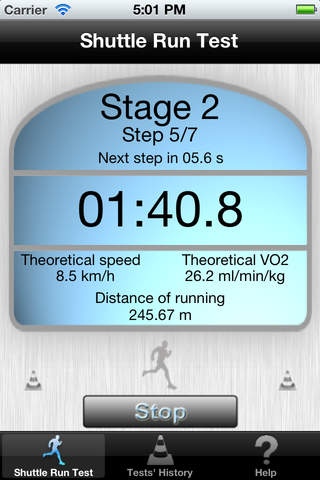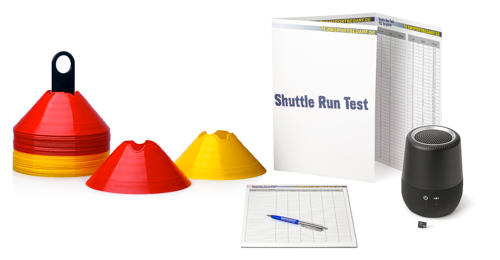

The field test most widely used to assess aerobic capacity in healthy schoolchildren is called the 20 m-SRT. However, it is still unknown whether VS promotes vigorous intensity during a field test, such as the 20-m shuttle run test (20 m-SRT). The latest systematic reviews of studies on children playing interactive video games have shown an association between an increase in exercise intensity from mild to moderate and a rise in HR. Heart rate (HR), which represents intensity during exercise, is considered maximum above 180 bpm in children, but the maximum threshold used is 200 bpm, while Pfeiffer considers a variation between 185 and 225 bpm. It is known that immediately before and at the onset of exercise, cardiovascular changes induced by the neural command center located in the bulbar region occur, resulting in increased heart rate and myocardial contractility. However, the findings of a recent systematic review demonstrate that the children in these studies did not reach maximum exercise intensity. In pediatrics, due to the motivational aspect, researchers have used virtual systems as a resource to assess cardiac response. Įarlier studies have evaluated the physiological responses to video games in healthy children or those with pulmonary disease. In recent years, interactive video games, known as Virtual System (VS), have been used for rehabilitation in different areas, such as geriatrics, neurology and pediatrics. The tests are motivational, and most children obtained the maximum VS score. The perceived exertion scales were correlated, but only the modified Borg scale correlated with HRmax in the 20 m SRT. VS can be used as a tool to evaluate the intensity of maximal exercise tests, given that the percentage of children who achieved HRmax did not differ between the VS and 20 m SRT. The multiple logistic regression model showed that motivation ( p = 0.98), sex ( p = 0.53), age ( p = 0.61), nutritional status ( p = 0.65), and speed ( p = 0.18) were not predictive factors of the child’s reaching HRmax. The children showed greater exertion on the Borg scale and motivation during the VS. Both tests were similar for intensity > and < 96% HRmax.

Maximum heart rate (HRmax) did not differ between the 20 m-SRT and VS (194.4 ± 10.2 bpm vs. Perceived exertion at the end of the tests was assessed using the modified Borg scale. To evaluate the influence of motivation on the 20 m SRT and (VS), at the end of the tests the children were asked to rate their motivation on a scale of zero to 10, zero being “not cool” and 10 “awesome”. Their resting heart rate was monitored for one minute and then throughout the tests. The two tests were performed one week apart and the children were instructed not to engage in any physical exercise or sports in the 24 h preceding each test. This is a cross-sectional study of 235 children (9.0 ± 0.8 years, 109 boys). The purpose of this study was to verify the agreement between the 20-m shuttle run test (20 m-SRT) and virtual system (VS). Earlier studies evaluated the physiological responses to video games in children with different clinical conditions however, no study has compared active video games with an incremental field test in healthy children.


 0 kommentar(er)
0 kommentar(er)
